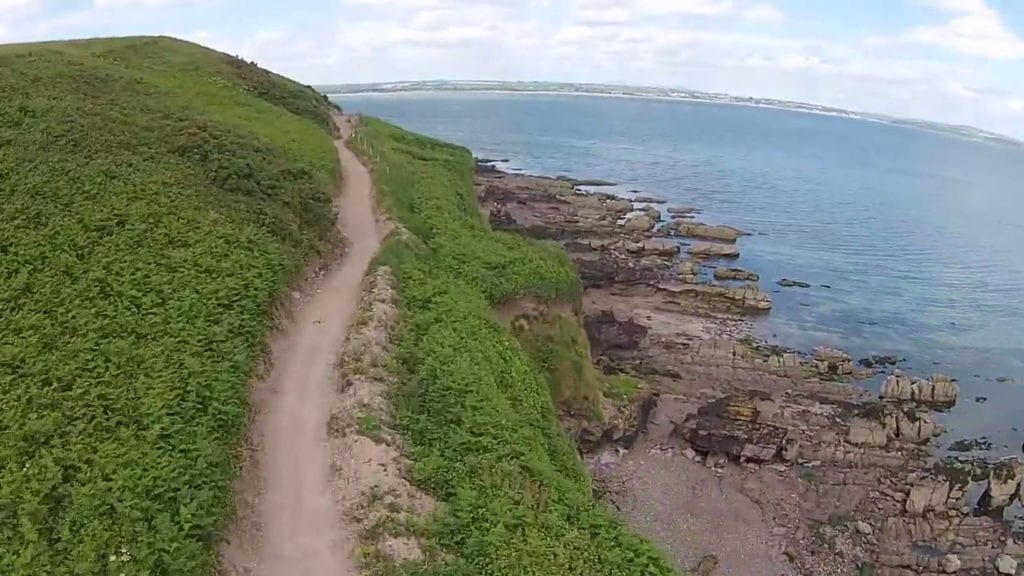Compared with the west coast, the south coast has a mere smattering of islands. From Hook Head in Co Wexford to Cape Clear in Co Cork, there are a few clusters of islands at Glandore, Cork Harbour, and Kilmore Quay, writes Dan MacCarthy.
Ballycotton Island in east Cork is a standout island, with its lighthouse providing safe navigation for shipping for over 150 years. Nearby, and around the same distance offshore, is Capel Island, just along the coast from Youghal and the mighty River Blackwater.
The island lies 500m off Knockadoon head (which itself has a striking Napoleonic-era watchtower which forms part of the superb new 7.5km walking trail built thanks to the efforts of the Knockadoon Enhancement Project. The island is a few kilometres along the road from the village of Ballymacoda. Boats fish the waters here for lobster, bass and plaice — the remnants of a much larger industry.
The name Capel is a Gaelicised form of Oileán an Cháplaigh after the Norman de Capelle family which was granted the island after the invasion of 1168. The name Supple derives from the Norman antecedent. This bird sanctuary island is often mistaken for Ballycotton Island, with its own lighthouse structure. However, on closer scrutiny, you realise it is not a lighthouse but a stump of a lighthouse and therein lies a story.
The island is uninhabited and, in all probability, was ever thus. The land has good grazing for goats, with a mixture of grasses and plentiful shelter. The Irish goat is a tame species and these Capel islanders provide a frolicsome attraction popping up behind a wall or scooting along the clifftop. On the west side, nearest the headland is a small beach while on the east, 20m exposed cliffs attest to powerful Atlantic storms.
In the mid-1840s, a number of shipwrecks prompted the Cork Steam Ship Company to request the construction of a lighthouse on Capel Island to “avert the frequency of wrecks along the unlit coast between Old Head Kinsale and Hook Head”, according to the Commissioners of Irish Lights.
As talks were ongoing, disaster struck. The first paddle steamer to ever cross the Atlantic, the Sirius, sailing from Glasgow to Cork via Dublin, struck rocks near Ballycotton Island on January 16, 1847, and was wrecked in spite of the best efforts of Captain Moffat. Twenty passengers and crew drowned but about 70 survived.
By this stage, construction of a lighthouse on Capel Island had already begun but it was abandoned in favour of Ballycotton Island, whose surrounding rocks were deemed more hazardous to shipping following the ill-fated Sirius sinking. The impressive sandstone and limestone structure is about 7.5m high and is surrounded by a high wall. Inside, the spiral staircase climbs in a semi-helix before its ascent is cruelly cut off by the stone ceiling.
The rest of the stairway, tower, and lighthouse top were never built, though the structure still forms a navigational aid to ships. A slight dome forms the top of the building, of course an unnecessary feature of completed lighthouses. The sizeable doorway, without a door, is open and permits access to visitors, chiefly birds these days. A happier tale than that of the Sirius is of the Cork Steam Packet ship Kenmare which was chased by a German submarine on June 27, 1915 between Ardmore and Capel Island. The captain managed to shake off its deadly pursuer.
Birdwatch Ireland reports that a colony of cormorants has made the island its home and other notable residents include peregrine falcon and choughs. In June, dozens of female cormorants mind the fledglings on the eastern sheltered part of the island, mere grey feathers and a few squawks at this stage. Most vantage points on the cliffs and under the earth embankments are
occupied by the cormorants, while at the shoreline the adults line up, drying their wings.
On the eastern end of the island a huge finger of rock points skywards, not unlike the ‘Wailing Woman’ on Skellig Michael. The obelisk seems to wag its finger in warning at seafarers, advising of some foreboding event, of which the island has known a few. It is a rock about which a myth might be told, but no such myth exists.
Capel Island is a bird sanctuary and permission to land needs to be obtained from birdwatchireland.com

